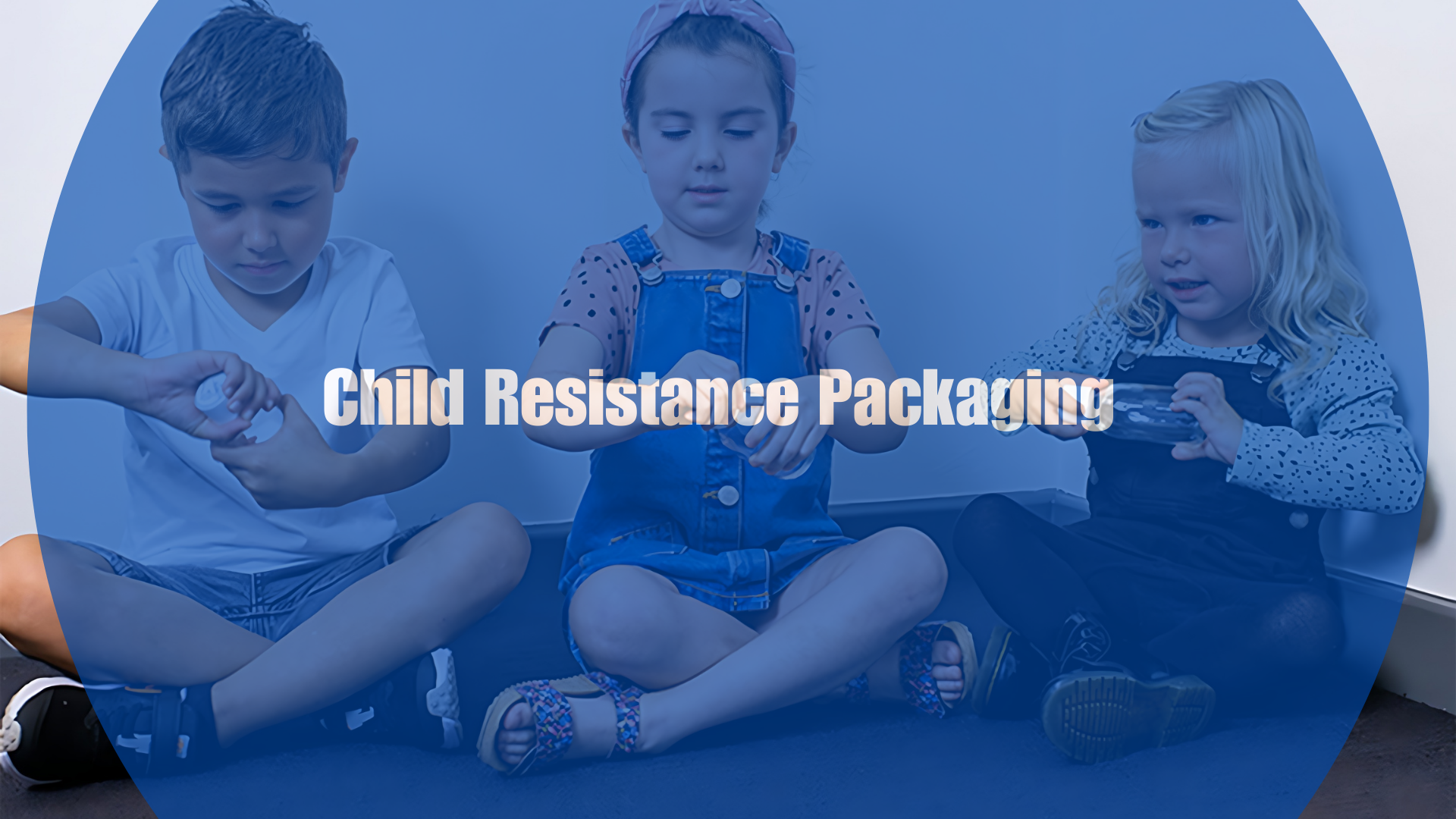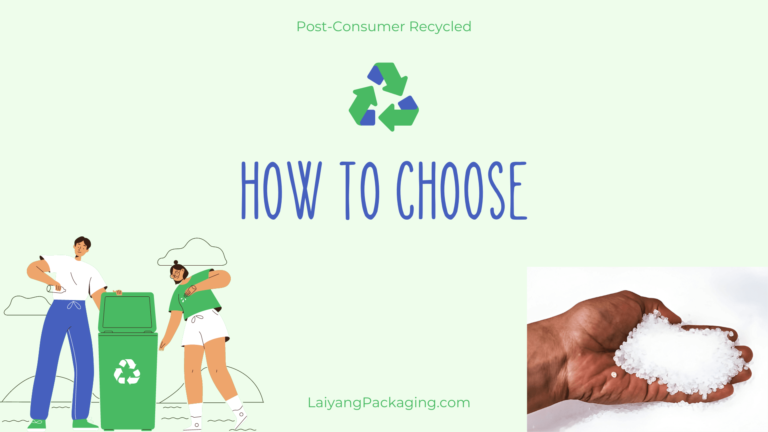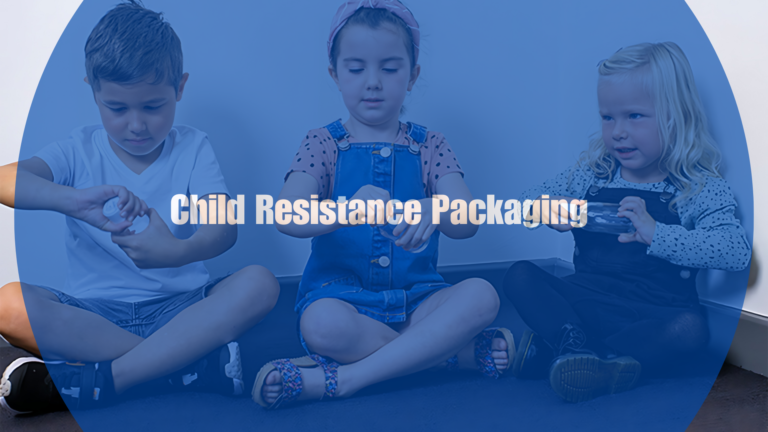Child-resistant packaging plays a vital role in protecting young children from the dangers of accidental ingestion of harmful substances. Its primary purpose is to prevent young children under the age of five from accessing and ingesting potentially toxic or hazardous products such as pharmaceuticals, household cleaners, chemicals, cosmetics, and other items that could cause serious harm if swallowed.
Many countries, including the United States, have regulations in place that mandate the use of child-resistant packaging for certain products. The Poison Prevention Packaging Act (PPPA) in the U.S. requires specific products to have child-resistant packaging to enhance safety. Adhering to these regulations not only ensures legal compliance but also demonstrates a brand’s commitment to consumer safety.
By making the packaging difficult for children to open, it significantly reduces the risk of accidental poisonings and injuries.
Child Resistant Packaging Standards
U.S. Standards: In the United States, the Consumer Product Safety Commission (CPSC) establishes the standards for child-resistant packaging. According to the CPSC, a child-resistant package must remain unopened for at least 85% of children in the first five minutes and for at least 80% of children after a demonstration on how to open it. The packaging should not be overly difficult for normal adults to open.
ISO 8317: This standard outlines the requirements and testing procedures for reclosable child-resistant packaging. It ensures that such packaging can be securely closed after initial opening.
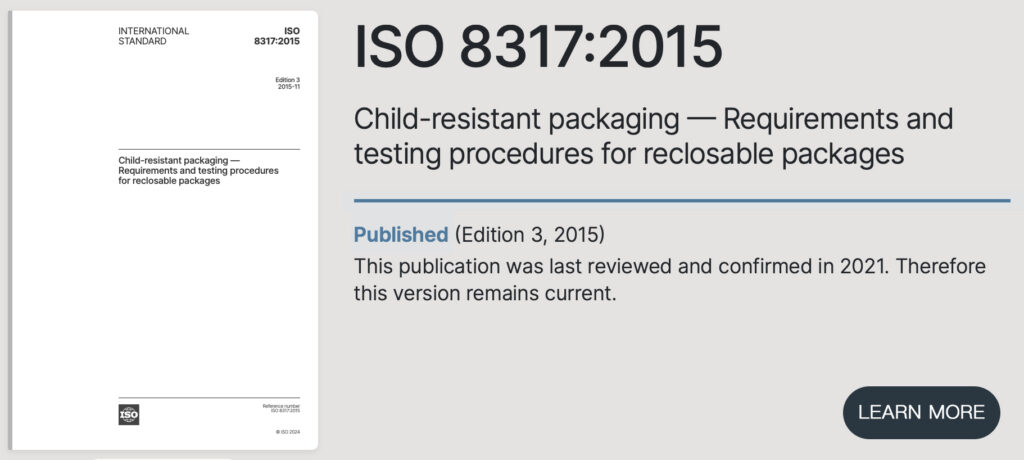
ISO 14375: This standard pertains to non-reclosable child-resistant packaging, such as blister packs used for pharmaceuticals. It specifies how these packages should be designed to prevent access by children.
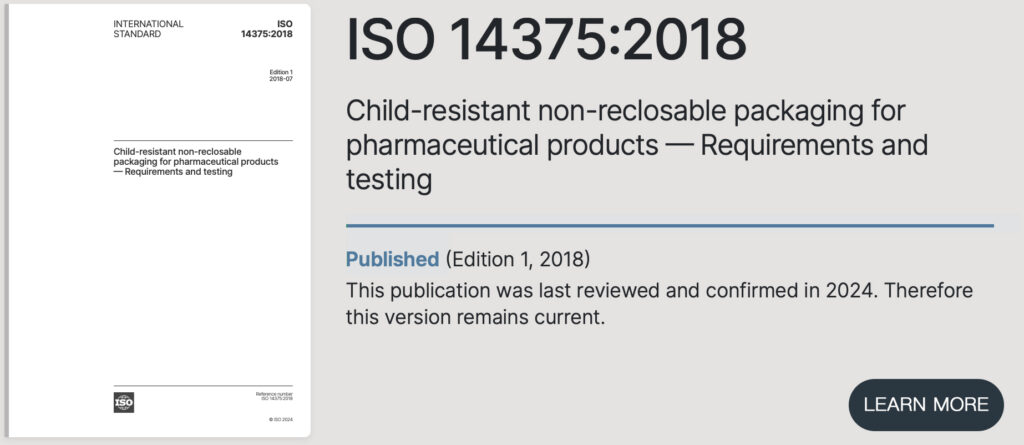
ISO 13127: This standard introduces mechanical testing methods for assessing the child resistance of packaging, allowing manufacturers to test minor modifications without needing to conduct extensive real-world tests each time.
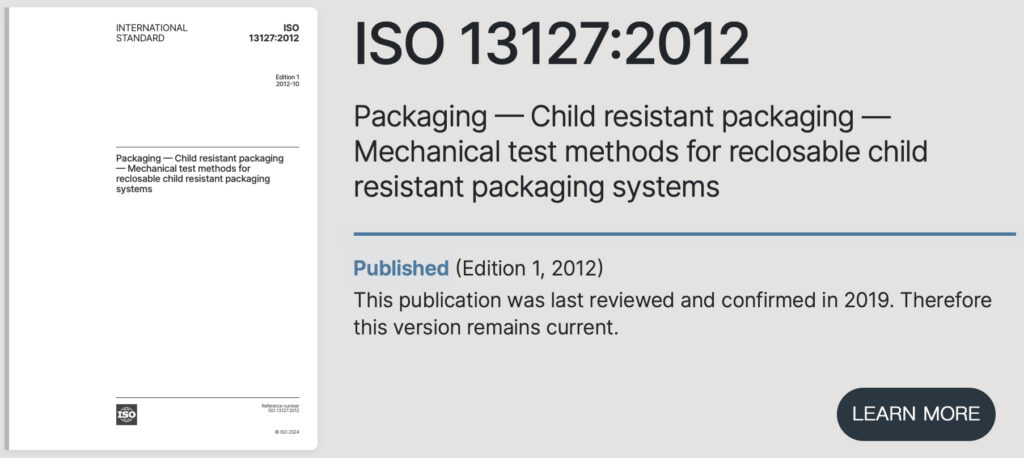
Meet Both Conditions About Testing Child-Resistant Packaging
- Child Resistant
- Senior-Friendly
Child-resistant packaging is designed to prevent access to children whilst remaining accessible for adults.

Testing Procedures for Child-Resistant Packaging
Testing Conditions for Children
Age Group: The testing is conducted with children aged between 42 and 51 months. This age group is specifically chosen as they are at a developmental stage where they are curious and capable of attempting to open various packaging types.
Testing Procedure:
Children are presented with the packaging and given two five-minute test periods.
In the first test, they attempt to open the packaging without any assistance.
If they fail to open it, they receive a silent demonstration on how to open it, followed by a second five-minute attempt.
For the packaging to be considered compliant, at least 85% of the children must be unable to open the package during the initial five minutes, and at least 80% must fail following the demonstration.
Testing Conditions for Adults
Age Group: The adult testing panel typically consists of individuals aged 50 to 70 years. This demographic is selected to ensure that the packaging is accessible to older adults who may have reduced dexterity or strength.
Testing Procedure:
Adults are first familiarized with the packaging and then given a five-minute period to open it.
If they successfully open it, they are provided with a second identical package and must attempt to reclose it within one minute.
For the packaging to pass this test, at least 90% of the adults must be able to open and reclose the packaging within the specified time limits.
For the Reader
These testing conditions are critical for ensuring that child-resistant packaging meets safety standards globally. They balance the need for child safety with adult accessibility, thereby helping to prevent accidental poisonings while allowing responsible adult use. Compliance with these rigorous testing protocols is essential for manufacturers to ensure their products are safe for households with young children.

